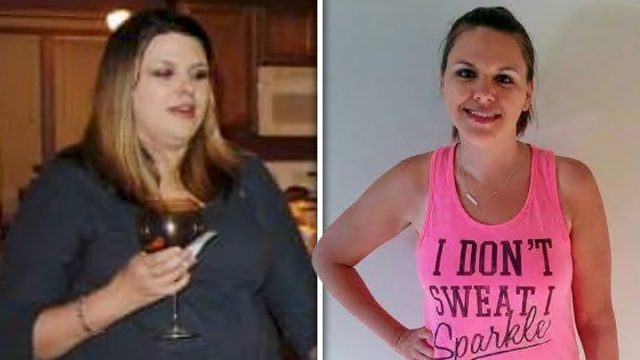She Gained Muscle and Lost 50 Pounds at 47 With These 7 Rules
"I spent 30 years losing and regaining the same 20 to 50 pounds," says weight loss coach Nissa Graun. Like many women over 40, she believed endless cardio and restrictive diets were the only path to fitness. That changed when she discovered a better approach – one that focuses on building strength rather than just cutting calories.
After transforming her own body by gaining muscle and losing 50 pounds, Nissa now helps other women break free from yo-yo dieting. Her method? Combining smart strength training with sustainable nutrition strategies that work specifically for women over 40.
Here are her seven proven rules that make building muscle and burning fat possible at any age.
Prioritize Protein for Your Foundation
"Your body needs specific nutrients to get stronger," Nissa explains in her post, comparing proper nutrition to the Earth's core structure. She emphasizes that whole food protein sources like meat, eggs, and dairy are crucial for muscle development. While protein powders and bars can help, they shouldn't be your primary protein source. "Your body will really start to take shape when you focus on more protein dense foods," she notes.
Balance Your Nutrients Strategically
"A balance of healthy carbs and fats are also required," Nissa points out. She recommends aiming for your target weight in grams of whole food protein daily while ensuring you're not neglecting other essential nutrients. If you experience digestive issues when increasing protein, she suggests reviewing proper digestion strategies before making dramatic changes to your diet.
RELATED: 8 High-Protein Foods with Nearly Zero Calories That Melt Fat
Replace Cardio with Strength Training
"It wasn't until I quit all strenuous cardio and instead prioritized strength training that I finally got results," Nissa shares. She advises following a structured full-body routine 2-3 times per week. "Working your butt off in the gym six to seven days each week only leads to exhaustion and injury. Trust me, I've been there."
Follow a Proven Program
"No matter how many YouTube videos you've binged on the subject, you'll never beat the experience of trainers who've been getting their clients' results for decades," Nissa explains. She recommends finding a well-structured plan that provides full-body workouts you can follow consistently. This approach ensures you're not wasting time with ineffective routines.
RELATED: 12 Everyday Food Swaps That Helped This Mom Drop 120 Pounds Without Feeling Hungry
Progress Your Workouts Systematically
Just like the Earth's lower mantle provides a foundation, progressive overload builds your strength base. "You have to continually stimulate the muscles by adding another rep, another set, better form, or a little more weight to your reps and sets each week," Nissa explains. This systematic approach ensures continuous improvement and prevents plateaus.
Track Every Training Session
"I never tracked my workout since in the past, I always just remembered what I did," Nissa admits. But precise tracking transformed her results. She now uses her phone's notes app to record every detail: "I can scroll up to my last workout and clearly see exactly what I did, which means I know exactly how to progress." This simple habit ensures you're actually moving forward with your training.
RELATED: 10 Warning Signs Your Body Needs More Protein Right Now
Build Strength Throughout Your Day
"Exercise snacks are small bounds of strength training you can do throughout the day," Nissa explains. She shares how this approach helped her progress toward unassisted pull-ups: "20 to 30 pushups per day was all it took to boost my strength on the pull-up machine." Start with simple exercises like 10 pushups and 30 bodyweight squats, performed 2-3 times daily, modifying as needed based on your current fitness level.
Nissa emphasizes that patience is key to sustainable results. "While you do need to cut calories to get rid of the body fat that's covering your muscle, rushing the process with another extremely low calorie diet is one of the quickest ways to destroy all of the progress you've built."
By following these seven rules, you can build muscle and lose fat without extreme dieting or endless cardio sessions. The key is consistency with both nutrition and training, while allowing your body time to adapt and strengthen. And if you enjoyed this article, don't miss 12-3-30 Walking Method: 20 Proven Tips to Lose Weight Faster.





